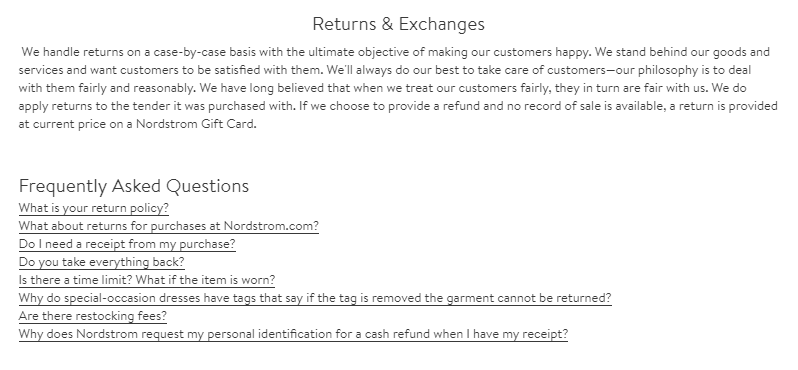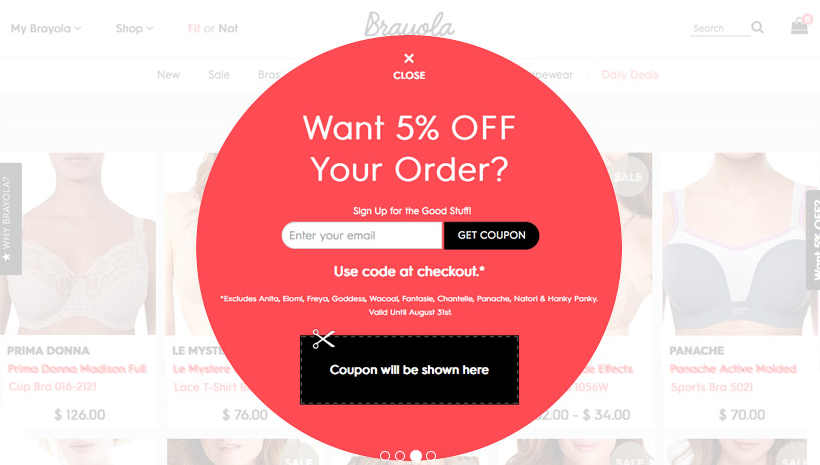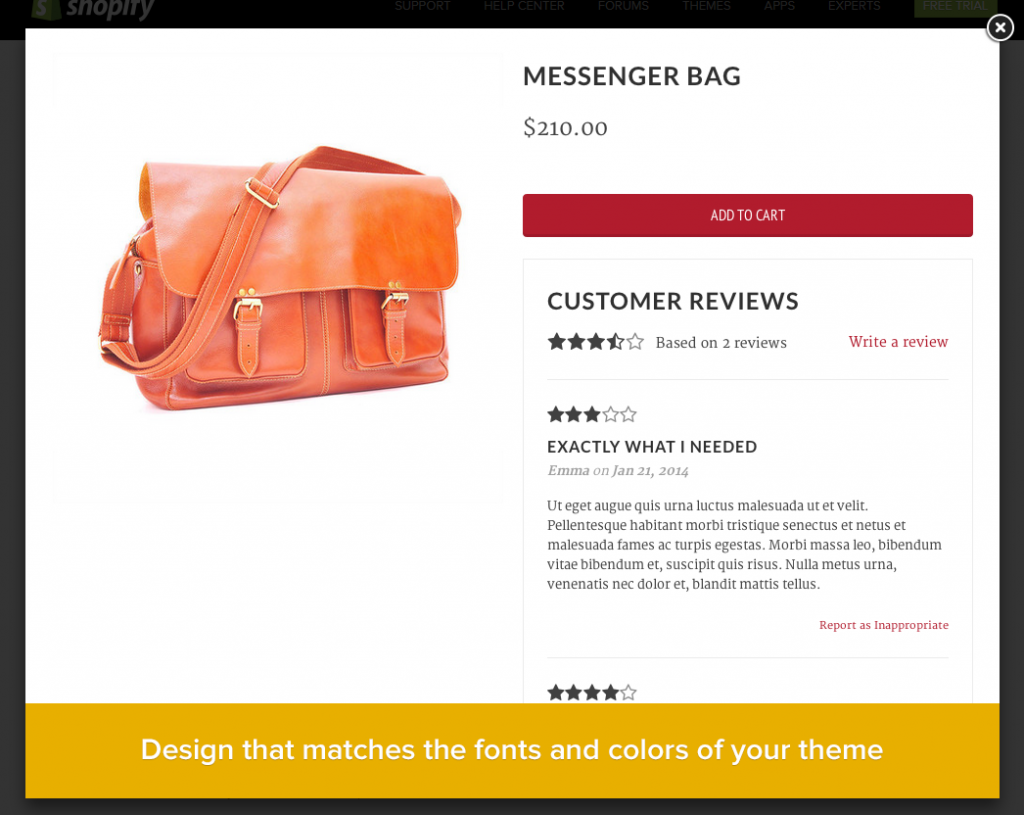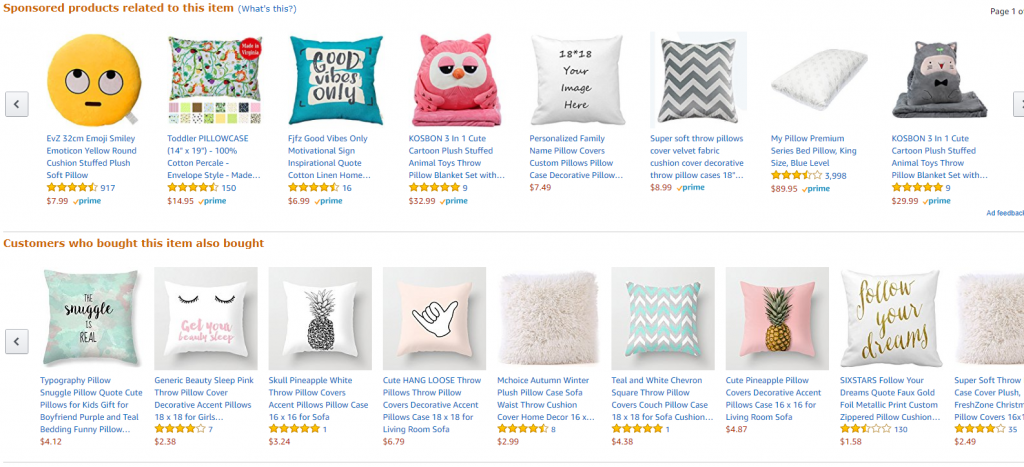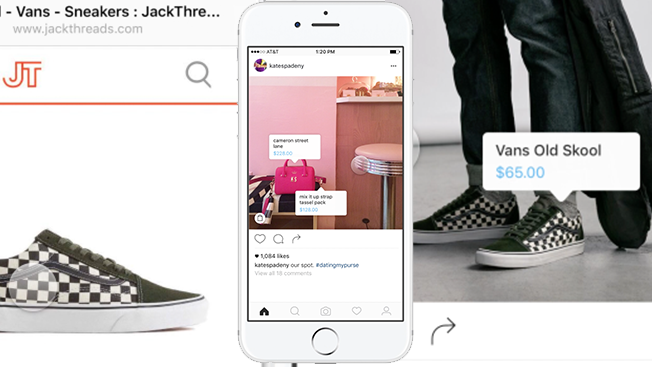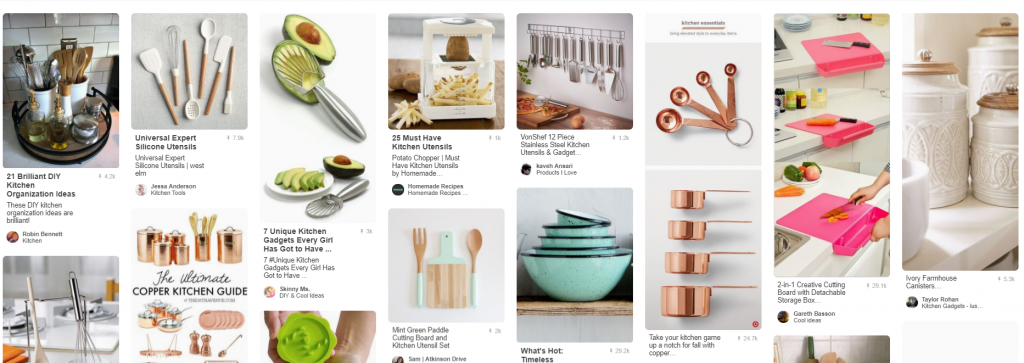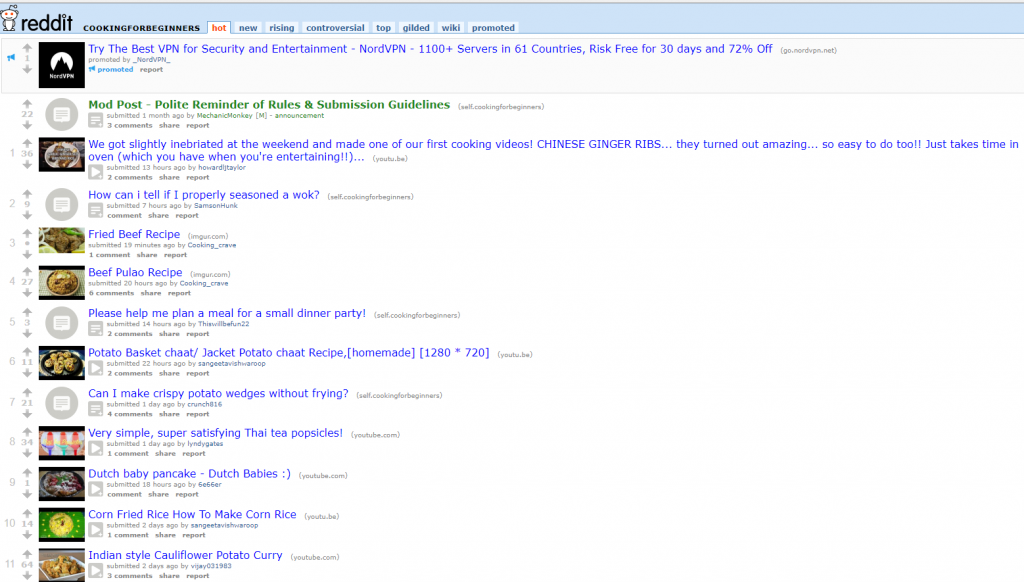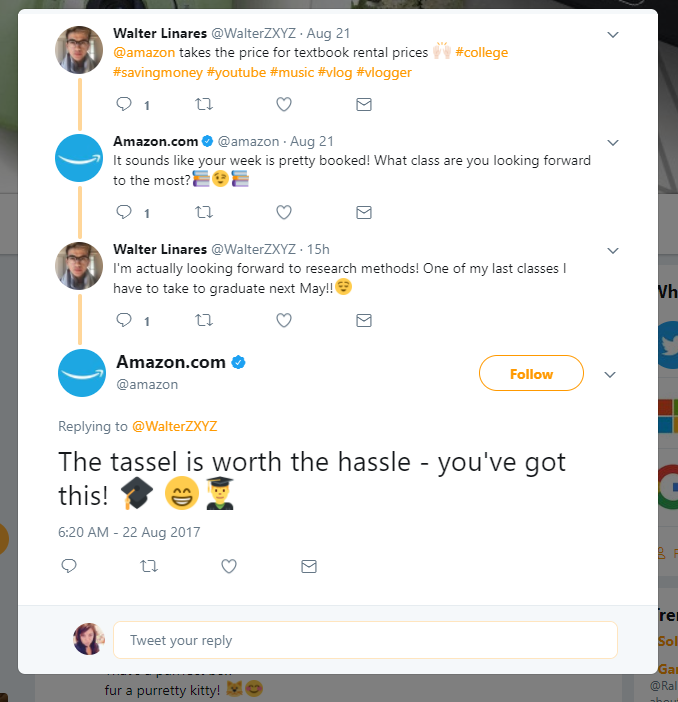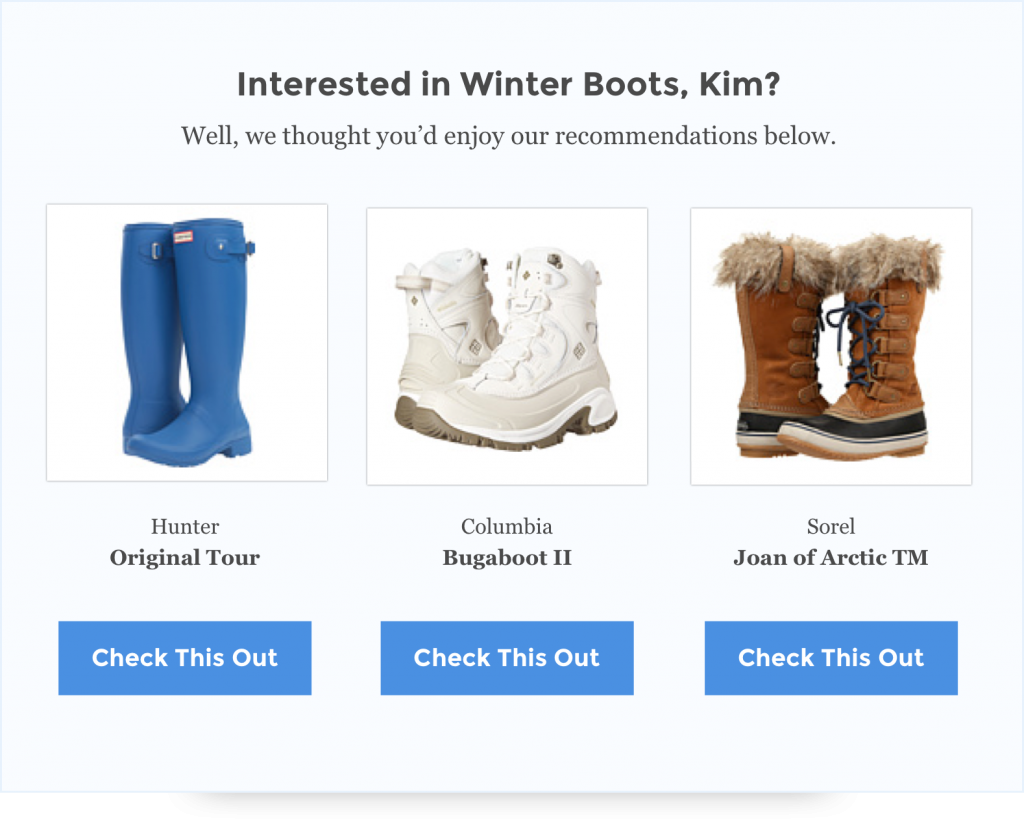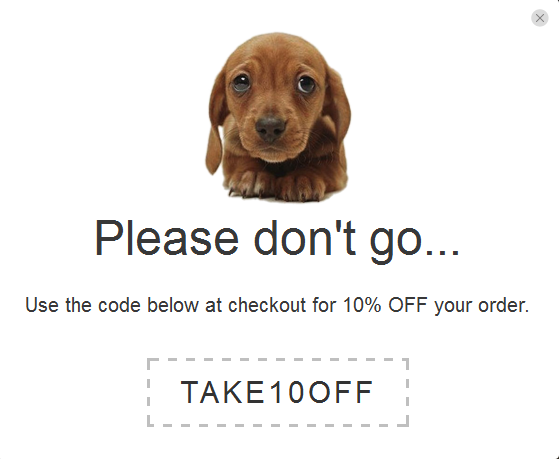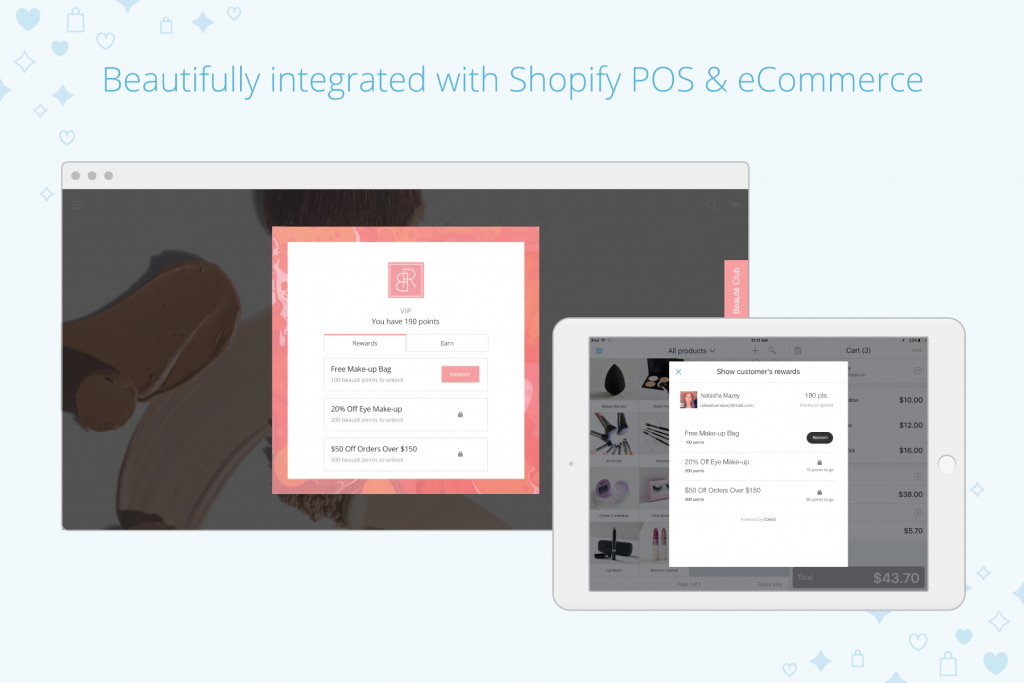Marketing isn’t just about Facebook ads and Google AdWords. When it comes to eCommerce, everything from your after-sale service to your site optimization and shipping procedures contribute to your marketing efforts, helps build trust and bring in new (and repeat) sales.
In this week’s post we bring you 25 bulletproof eCommerce marketing tips and hacks across the sales funnel spectrum to help you make consistent sales.
1. Engage Real Shoppers to Test Your Online Store Optimization
You can drive thousands of people to your store, but if it too difficult to navigate or your sales funnel is confusing, they will jump ship and check out the next store in your niche on their SERP (search engine result page). So your first marketing tip and hack has less to do with driving your shoppers to your store, and more importantly to do with keeping them there once they are browsing.
Marketing 101 says you need to get into the mind of your potential shopper to reach them, so when it comes to optimizing your site for more sales, why not turn to your desired target audience. Looking closely at how real shoppers engage with your store will give you so much more insight into what your potential customers want and therefore create marketing objectives and site changes that result in conversions. You can do this by choosing customers that are your ‘ideal’ shopper and engaging them personally with surveys, one-on-one questions and courtesy calls. Also, it is important to do a deep user flow optimization – where you look at who is coming to your site, how they are coming and how they behave once they are there.
2. Talk to Your Customers in Their Language
If you are selling globally to countries with multiple native languages, then this one is for you. By talking to your potential customers in their own language enables you to sell beyond language limitations.
To do this:
- Make sure that you have set up your Facebook page to be able to automatically translate
- Ensure your site is available in those languages through translation apps like Shopify’s Weglot Translate
- Target other languages in your AdWords campaigns
3. Get Personal With Abandoning Shoppers
According to general stats, the typical shopping cart abandonment rate for online retailers varies between 60% and 80%, with an average of 67.91%. So how do you get those potential shoppers back in your checkout? Through personalized emails that enable you to send content to each shopper that matches their activities on your site.
I don’t mean including them in your weekly newsletter and just addressing them using name automation – this is not enough. I mean creating personalized emails that include content related to the items abandoned in their cart , or by creating Facebook retargeting ads that show each potential shopper the items they had in their cart. By being less generic and more personal, you are more likely to get higher ROIs, repeat site visits and of course, sales.
4. Re-Send Emailers With Different Subject Lines
Say you sent out your weekly email and your click-through rate is good, however your open rate isn’t. That would mean that your content is good enough to get you the traffic, but your subject was lacking. Try resending emailers that were not opened to the people who didn’t open them, with a different subject line – one that could help increase the number of opens and get even more clicks.
This should be relatively easy to do through your email marketing platform Here’s a step-by-step how-to guide from Mailchimp: Resend an Unopened Campaign.
5. Launch on Multiple Platforms
Increase sales and brand awareness by selling across a variety of channels. This is particularly helpful when building a new brand of self-created products. Plus, by generating good seller feedback from Amazon or getting good Facebook reviews, you are building trust as you go. The four main benefits are:
- Establishing and maintaining more than one revenue stream
- Reaching more customers
- Leveraging trusted platforms to build product trust
- Leveraging high-traffic platforms to gain more site visitors and therefore offering more chances to sell
Selling successfully across multiple eCommerce channels – like Facebook, Ebay, Amazon, or Etsy – can help you leverage these big platforms depending on what they are offering or what products you are selling.
6. Don’t Forget about SEO
SEO may be slow moving, but it is imperative for a long-term marketing strategy to bring in traffic. While your mailing lists, PPC campaigns and digital marketing strategies are important for instant traffic, SEO practices will help you maintain long-term streams of potential shoppers while also helping to ensure you maintain an optimized site. In other words, the good product descriptions, page titles and meta data you need for long-term SEO will also give your site the value, trust and clickability you need to get the sales when people do click onto your site. Because as we learned in our PPC vs. SEO – Which Provides Better Value mega guide, the perfect marketing and eCommerce strategy needs both!
7. From Beginning to End, Focus on Personal Shopper Experience
Last week we spoke about how you can run with the big eCommerce businesses and highlighted one key advantage smaller stores have over the bigger brands: “In a market where personal service is ‘in,’ and with customers opting for the latter more often than not, small businesses have a natural upper hand over the big dogs.” That’s why creating a personal customer experience is so important. The ten commandments of customer service that you should be following for marketing success, according to Russell, founder and CEO of GetFetch, are these:
- Keep your site optimized and user-friendly
- Keep support simple
- Keep the customer happy
- Keep proactive
- Keep communication personal
- Keep organized with apps
- Keep ahead of the game with the element of surprise
- Share your success stories and reviews
- Experiment often
- Learn and adapt
8. Become the Authority in Your Niche
If you want tips on how to become the ultimate authority in your niche, you only have to look at Nike. When it comes to sports gear, fitness and sneaker trends, they own it. From their running apps to their blog, their content marketing strategy is right on the money. By becoming an authority in your niche you make your store the go-to for any related information needed.
You can do this by building a kick-ass scalable content marketing strategy, including anything from how-to videos to informational social posts with useful tips and hacks.
9. Use Shipping and Packaging to Boost Loyalty and Brand Awareness
Package branding is so often overlooked by newer online store owners, and it can be an awesome brand awareness tool. The Marketing Manager of ShippingEasy said this:
“Consider taking advantage of package visibility to advertise your brand and increase awareness. Do the math on whether custom, branded boxes are worth the extra cost versus generic or carrier-supplied free boxes. Regardless of the box you use, you can cheaply feature your brand with adhesive stickers and on packing tape, as well as on packing slips. You can increase repeat purchases and loyalty by ensuring on-time delivery.”
Not to mention the importance of after-sale service. Going that extra mile with your shipping procedures – ensuring you follow up and deliveries are indeed made on time – can turn a one-time customer into a lifetime shopper. Plus, a good return policy prominently displayed on your site can sway a browser into making their first purchase.
Looking for more tips? Visit our The Right Way to Handle Refunds guide.
10. Save on Marketing with Popup Offers and Incentives
Don’t have a popup offer or incentive on your eCommerce site? You’re missing out. Popups allow you to capture email addresses and grow your social counts by offering unique promo codes and discounts which in turn can turn an online browser to a shopper.
Last year one case study revealed that by adding a popup you could increase your mailing list by 40%, while another showcased a store that made $40k in just ten days using this simple and highly cost-effect marketing hack with the help of our Coupon Pop.
11. UGC, UGC, UGC!
Reviews, social posts, online recommendations: UGC (user-generated content) is king in showing your trustworthiness and boosting sales. It also has the added benefit of allowing you to build interaction with your customers to keep your brand front and center in their minds.
To make use of this marketing trick, you should be using these UGC tools to boost sales:
- Review Management Tools
- Hashtag Research Tools
- UGC Promotion Tools
- Email Collection tactics
- Display Tools
You can get the full lowdown on these eCommerce UGC tools by visiting our UGC tools guide.
12. Engage Influences to Build Trust
Influencer marketing is all the rage at the moment and it is no surprise why: it not only helps you get your store brand name out there, but builds trust in a big way. Tools like Buzzsumo can help you find those trending bloggers while searching popular hashtags on Instagram can point you to the right influences to contact for your niche. You will want to look at their number of followers, what you could offer them in the way of compensation, and the kinds of posts they make, to ensure your products line up with their content. So, how do you go about contacting influencers? Here’s a few steps to get you started:
Step 1: Establish a relationship by following them on social media and sharing their content
Step 2: Make contact through a personal email or direct messaging
Step 3: Make an offer, clearly communicating your needs
Step 4: Measure the results and follow up to keep a good working relationship for possible future collaborations
13. Get Personal
Personal branding is another buzzword this year. Why is it important to you? Because it puts a human name and face to your store. By leveraging your personal brand you can also grow your business by reaching your already established network. However, this is not the only way to make your brand more personal. Across your customer service, social and email channels, be personal. Address emails to people by name, share behind-the-scenes photos and videos on social media and show people the human – personal – element behind your business. People are more trusting when they see the personal and are therefore more likely to buy from your brand.
14. Rev Up Product Reviews by Donating
Getting reviews from popular publications is a big win! Target a few key publishers, blogs, magazines, even influencers in your niche, and send them a free sample product and review request. When approaching them it is important that you are:
- Relevant & Personal: Take the time to read the publication/blog to not only ensure that a product review would be in line with their content and your niche market, but to allow you to contact them personally with an understanding about the writer.
- Helpful: What can you offer them in return for their review – besides the free product? Can you offer exposure to your network, followers and buyers through email or social marketing?
Once the review has been published, it will also allow you to put “‘as featured by…” banners on your site to boost customer trust of incoming traffic.
15. Show Reviews and Ratings on Your Product Pages
As we mentioned, UGC is so important and one of the biggest UGC options you have are reviews. Displaying online reviews can boost your sales in a big way. And I don’t mean just on your home page. Showing specific ratings and reviews on your product pages can help push for a sale. When surveys show that as much as 90% of customers say buying decisions are influenced by online reviews, can you afford NOT to have them?
For Shopify store owners, the Product Reviews App will help you get this done in a jiffy. For Woocommerce, you can either load a plugin or if you are a little more tech-orientated, update your code. Magento store owners: a simple code will help: How to display product reviews on a product page in a Magento theme.
16. Cross-Sell and Upsell Like Amazon
If you’re looking for upselling inspiration, you only need to turn your eyes to Amazon; they are the kings of cross-selling and upselling. From their ‘related’ and ‘customers also bought’ sections during search, to their ‘frequently bought with’ sections in your cart, they are cross-sellers on steroids – and it works.
Upselling and cross-selling offers big returns on relatively low expense. Potential shoppers are already on your site, they are already in your cart; by encouraging more spend when they there you can increase your revenue dramatically. So how do you optimize your store for more conversions? It’s as simple as installing the right app (Cross-Sell, one of our 2017 Top Shopify Apps, is a great example of this) and changing your platform settings. Here’s a how-to from Woocommerce.
17. Split Your Social Efforts and Be Platform Diverse
No, not all social media platforms are created equal. They have different core demographics, their users have different interests overall, and some niches work well on some platforms while others don’t. For example, say you are selling cooking gear and you’ve been putting a lot of effort into your content strategy with cooking-related blog posts – like recipes – and how-to videos. The videos would be perfect for YouTube but recipes would be better-suited for the Pinterest market. As you can see, it’s not only the subject (product/niche) you are posting about that is important, but the kind of content you are posting.
Here’s a short overview of leading social platform trends and content ideas so you can split your efforts.
Facebook for eCommerce
Ah, Facebook, the biggest, baddest social media platform there is. From its dynamic product ads to its Facebook shop integration, it’s an eCommerce dream. The big content winner at the moment is Facebook live videos and those photos with moving elements in the background – Cinemagraphs. If you don’t know the latter – here you go (click on the below images):
The trick with Facebook is to keep your content varied, fresh and up-to-date, so post those Facebook lives from your manufacturing stores or create cinemagraph product photos. You can use iPhone and Android apps to easily do this, like Cinemagram or Echograph. And with the endless advertising options on Facebook, it is, of course, the big traffic driver.
Instagram for eCommerce
When you think of Instagram, think eye candy and/or personal stories. Instagram users either want to see human stories or they want to see pretty photos, so content here needs to be of higher quality – your amateur Facebook videos won’t get the engagement you want on this platform but your pretty product photos will. At the end of last year, Instagram let brands test taggable, buyable products in photos directly from their Instagram posts. This is expected to roll out to everyone early in 2018.
Pinterest for eCommerce
Pinterest is different from other platforms, as although it is classified as a social media platform, you need to look at it like a virtual pinboard or a pretty bookmarking site. It is perfect for content marketing blog posts within your niche. The trick is also to create images that go with this platform style and not to use the same images you would for Instagram or Facebook.
For your products, Pinterest offers buyable pins for those of you using BigCommerce, Demandware, Magento or Shopify and can be a great traffic-driving source. If you’re looking for more tips, try our 8 Ways to Turn Pinterest into a Traffic-Driving Machine post.
Reddit for eCommerce
Reddit is home to 250 million users and discussions on nearly everything and anything from soccer and politics to running gear and cooking. Find a subreddit (a sub-discussion) that is right in your niche and get in on the conversation. Redditors do not respond well to high-sell tactics, so this is where you offer relevant, helpful information or you can opt in for Reddit ads if you have the budget.
Twitter for eCommerce
Twitter has grown into a great customer service tool for online stores. The benefit is that resolutions are quick, and if done publicly, you can show off your great customer skills and build trust at the same time. Plus, you can really show off your brand personality on this platform:
18. Content Market Your Way to More Sales
We have mentioned content marketing above and for good reason; it is also well worth giving its own point. eCommerce owners need good, relevant, helpful content to stand out. And in a world drowning in content, content marketing strategies are a must. A good, scalable content marketing campaign should:
- Define Your Content Marketing Objectives
- Be Organized
- Include Repurposed Content to Make it Stretch
- Include Automatic Topic Discovery
- Concentrate on Content Marketing Metrics that Matter
Head over to our Guide to Getting Awesome Results from Your Content Marketing Strategy to get started on yours today.
19. Automate Your Email Marketing Campaigns
Through all growing tech and social media updates, there is one marketing constant that is the foundation for any online store business: email marketing. Email marketing is still one of the best ways to upsell, cross-sell, give customer service, do research, keep in contact with previous buyers and build your loyal lifetime shopper base. We have written a lot of posts regarding this because it’s one of the simplest, cheapest and of course most effective marketing hacks there is.
By automating most of your marketing you can ensure that you are getting your emails out there with minimal hassle. These top 5 email marketing posts will get you started:
- Top 4 Things That are Killing Your Email Marketing and How to Fix it for 2017
- Full Guide to Email Platforms
- 6 Lessons From the Best Email Marketing Campaigns
- Beat the Average With 10 Email Marketing Tips for eCommerce
- 7 Proven Steps for Turning Order Confirmation Emails Into a Marketing Tool
Don’t Forget ‘Abandoned Cart’ Email Automation
Abandoned cart emails need their own sub-header. This little emailer could help you recover a big percentage of those shoppers who leave their carts without buying. In fact, Bluecore says that cart abandonment email conversion rate average is higher than any other automated email. The general recommendation is to set up these emails to be sent within 24 hours of when the shopper jumped ship. Shopify owners can use apps like Abandon Aid or Jilt, and for those of you not on Shopify, check out Rejoiner or Cart Rescuer.
20. A/B Test Your Checkout Process
This brings us to the next point: When last did you test your checkout process? Getting your checkout just right can help you decrease cart abandonment from the get go – think prevention instead of treatment. The best way to do this is to A/B test your entire checkout process to see which call-to-action buttons, copy and informational text helps get your conversions up. According to the Paybill team, these are the five tests you should be running:
- Test guest checkout versus member checkout
- Test adding trust and security seals to checkout
- Test a simpler checkout with less distractions
- Test whether single or multi-page checkout gets you more conversions
- Test various calls to action
Back in 2014 we did a full case study on cart abandonment, where one store was able to boost their sales by $15k by optimizing their site and testing various products including exit popups that offered shoppers 10% off before they were redirected off the site.
A/B testing your process can really help boost those sales!
21. Create Viral Product Videos
In 2017, if you’re not thinking “video, video, video” then you’re behind. The beauty of Facebook video is that it doesn’t have to be an Oscar-winning product to get viral status. If you look at the top product trend videos you will see these winners aren’t doing anything that any small business owner can’t do. The trick to creating the perfect video is this:
- The Products
- The Story
- Production Quality
- A Call To Action
And by production quality, we mean this:
Head over to our How to Create the Perfect Facebook Video to get your products to go viral!
22. Implement a Loyalty Program
An oldie but a goody, loyalty programs is a leading eCommerce marketing hack. It not only helps get those sales in, but helps you turn one-off buyers into loyal customers, making it well worth the spend. Last week it was a key point in our guide to how small businesses can compete with big stores like Amazon. There are four main types of loyalty programs you could run:
- The point system – the more they shop the more points are earned
- The value-based system – where you offer a portion of the sale to a good cause
- The tier system – where you have VIP offers at different levels
- The paid system – a monthly subscription where shoppers have exclusive access to big deals
It doesn’t have to be big work, either. There are loads of apps out there to help, like our Coupon Pop or Collets Beautiful Loyalty Programs for eCommerce & POS.
23. Leverage Your Personal Brand
What is personal branding?
“Personal branding is the practice of people marketing themselves and their careers as brands. Personal branding is essentially the ongoing process of establishing a prescribed image or impression in the mind of others about an individual, group, or organization.”
You, as a business owner, have a vast network at your disposal. You have followers and family and LinkedIn connections who all there for the taking. And as an entrepreneur, your personal brand can help position you as the expert in your niche, build brand awareness for your business and therefore bring in more business.
Don’t think personal branding is effective? Then you don’t know Gary Vaynerchuk.
24. Leveraging PPC and Google AdWords
As we learned in our Facebook vs. AdWords and PPC vs. SEO posts, no marketing strategy is complete without PPC (pay per click) advertising. No matter whether you are a new business who needs sales fast, or an established business looking to launch a new product or take your brand awareness to the next level, PPC is a must for all. So, how do you choose between them? The trick is not to choose but to leverage each platform for different marketing objectives. Let’s take you through the leading platforms and the ways you can leverage your objectives.
Google AdWords
This is the biggest traffic-driving platform available, with Facebook ads coming in second.
Google AdWords lets you bid on chosen keywords so that you can have have clickable ads placed in Google’s search results, and is an eCommerce must to match your store to people looking for the types of products you are selling. What do I need to know about Google AdWords, you may ask. Our Full Google AdWords Guide is a good place to start.
Facebook Ads
Facebook, the second-biggest PPC traffic-driving machine offers a variety of ad options to match each of your objectives. These include:
- Remarketing campaigns to target site visitors
- Dynamic product ads to target cart abandoners and previous site visitors
- Lead generation ads to collect email addresses
- Traffic-driving ads to bring people to a landing page or your store
The thing about Facebook ads is that even the most seasoned eCommerce advertisers among us can get it wrong. This is why we put together the 11 Things I Wish I knew Before I Started Facebook Advertising post. Plus, Facebook advertising changes on a nearly daily basis so if you want to truly leverage this PPC platform to its fullest, follow blogs like this one or Facebook business news for updates.
Google Shopping
Google Shopping are dynamic product ads through Google based on search queries. They display like this:
And are run from your AdWords account:
25. Outsource
Lastly, outsourcing. One of the biggest marketing hacks you can implement. Here’s the thing: you can’t do everything. Or you could, but doing it well is another story. From creating long blog posts to running successful AdWords campaigns, outsourcing can save you time and bring in much better sales results. Outsourcing doesn’t have to cost you a fortune. For PPC, apps like Traffic Booster do all the optimization and management for as little as $67 a month. Or if you are looking for designers, web help or content writers, try Fiverr – an affordable outsourcing marketplace. The point is outsourcing can save you a bunch in the long run, leave you time to concentrate on what you’re good at and help take your online store to the next level.
—
There you have it: 25 tips and hacks eCommerce stores need to take their marketing up a level to increase sales. The bottom line is that if you want a bulletproof eCommerce marketing strategy, it should: set out your objectives and strategy, optimize your content and site for SEO and shoppers, leverage social media and customer reviews, reward your loyal customers, automatically address card abandoners, be personal, upsell to the max, and engage your customers and give them the feeling of one-on-one service.
If you are still not sure whether your store and marketing plans are optimized to get the sales you want, head over to our Online Store Feedback guide or post your questions in the comments below.

Nicole is a content writer at StoreYa with over sixteen years experience and flair for storytelling. She runs on a healthy dose of caffeine and enthusiasm. When she's not researching the next content trend or creating informative small business content, she's an avid beachgoer, coffee shop junkie and hangs out on LinkedIn.
Recommended articles
 Facebook Ads for eCommerce: 16 Strategies, Examples & Tips
Facebook Ads for eCommerce: 16 Strategies, Examples & Tips
 How to Build a Winning eCommerce Ads Strategy
How to Build a Winning eCommerce Ads Strategy
 Google Ads for eCommerce: Everything You Need to Know
Google Ads for eCommerce: Everything You Need to Know
 10X Your Traffic with PPC Management Software
10X Your Traffic with PPC Management Software
Comments
Powered by Facebook Comments

